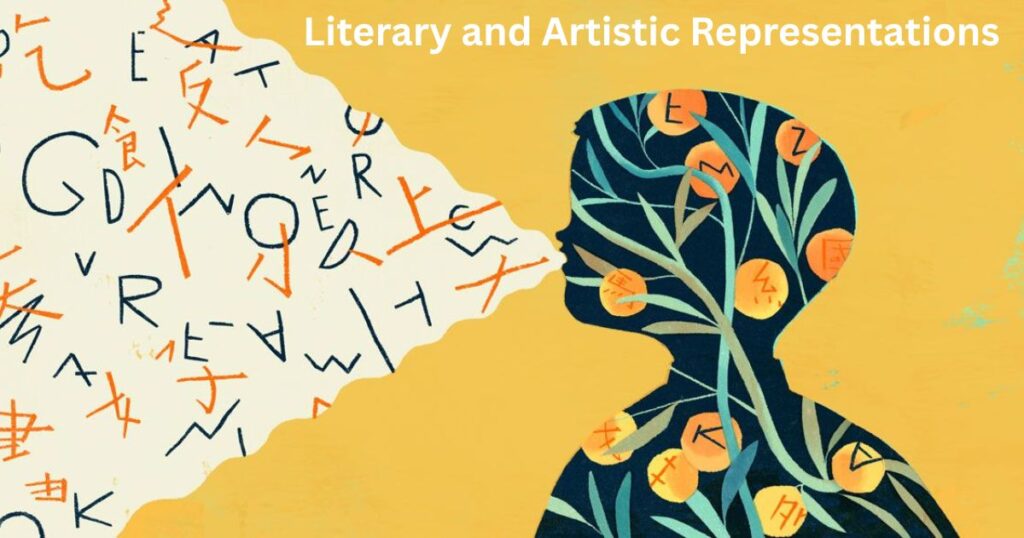The term Anjin (按針) represents one of the most fascinating intersections of maritime expertise and cross-cultural exchange in Japanese history. This Japanese word, meaning “pilot” or “navigator,” combines the kanji characters an (按, “to guide”) and jin (針, “needle” or “compass”), creating a designation that would become synonymous with skilled navigation and cultural bridging.
The significance of Anjin extends far beyond its literal translation, embodying themes of guidance, cultural adaptation, and diplomatic innovation that remain relevant in our interconnected modern world. Most notably associated with William Adams, an English mariner who earned the honorific title “Anjin-sama” in early 17th-century Japan, this term continues to inspire contemporary discussions about international cooperation and cultural understanding.
Etymology and Linguistic Roots
The linguistic foundation of Anjin reveals the practical maritime culture of feudal Japan. The first character, an (按), conveys the concept of pressing or guiding with deliberate control, while jin (針) specifically refers to the needle of a compass—an essential navigational instrument for seafaring nations.
Japan’s geographic position as an island archipelago necessitated sophisticated maritime knowledge for both commercial trade and territorial defense. The Anjin therefore occupied a position of considerable respect and practical importance within Japanese society, representing individuals who possessed the technical expertise to navigate treacherous waters and guide vessels safely to their destinations.
During the late 16th and early 17th centuries, when European maritime technology began influencing Japanese navigation practices, the term acquired additional layers of meaning. The introduction of advanced Western navigational techniques enriched the cultural significance of the Anjin role, transforming it from a purely domestic designation to one that encompassed international maritime expertise.
Related maritime terminology includes kaizoku (pirates or general seafarers) and shusen (merchant ship captains), though these roles lacked the specialized navigational expertise and cultural respect accorded to the Anjin.
Historical Context: William Adams, the Anjin

William Adams (1564–1620) emerged as the most prominent figure associated with the Anjin designation, becoming the first Englishman to establish himself permanently in Japan. His arrival in 1600 aboard the Dutch vessel Liefde occurred during the tumultuous Sengoku period, an era of civil warfare and political fragmentation that lasted from approximately 1467 to 1603.
Following a harrowing maritime journey and initial imprisonment due to Japan’s wariness of foreign arrivals, Adams demonstrated navigational capabilities that captured the attention of Tokugawa Ieyasu, a influential warlord who would subsequently establish the Tokugawa shogunate in 1603. This political regime would govern Japan for the ensuing 250 years, ushering in an era of relative stability and controlled international engagement.
Ieyasu’s recognition of Adams’ expertise resulted in the unprecedented honor of the “Anjin-sama” title and the granting of a feudal estate in Miura, where Adams became known as Miura Anjin. This remarkable integration of a foreign individual into Japanese feudal society represented an extraordinary diplomatic achievement during a period of limited international contact.
Adams’ contributions to Japanese maritime development included the construction of Japan’s first Western-style sailing vessels, facilitation of trade negotiations with Dutch and English commercial enterprises, and service as a crucial cultural intermediary between Eastern and Western traditions. His technical expertise and diplomatic acumen established a foundation for early European-Japanese relations that would influence subsequent centuries of international engagement.
Cultural Significance in Japan
The Anjin narrative embodies Japan’s selective approach to foreign influence during a pivotal historical transition. Adams’ acceptance and integration occurred immediately before the implementation of the Sakoku policy (1633–1853), during which Japan enforced strict national isolation. This timing highlights a pragmatic governmental willingness to embrace valuable foreign expertise while maintaining cultural sovereignty.
Within Japanese cultural contexts, the Anjin story represents several fundamental values: resilience in overcoming linguistic and cultural barriers, loyalty demonstrated through dedicated service to Japanese leadership, and cultural exchange that bridges disparate traditions without compromising essential cultural identity.
The concept of guidance through uncertainty resonates deeply within Japanese social philosophy, which traditionally emphasizes harmony and collective welfare. The annual Anjin Festival in Ito, Shizuoka, continues to commemorate Adams’ legacy through historical reenactments and cultural celebrations, demonstrating the enduring relevance of his story within contemporary Japanese society.
Adams earned his Anjin designation specifically through his mastery of compass navigation and ship piloting techniques, capabilities that impressed Japanese leaders who were unfamiliar with Western maritime methodologies. His technical expertise provided practical value that transcended cultural differences and established trust through demonstrated competence.
Anjin in Popular Culture: Shogun and Beyond
The global recognition of the Anjin concept expanded significantly through James Clavell’s 1975 historical novel “Shogun,” which presented a fictionalized account of Adams’ experiences in feudal Japan. The protagonist John Blackthorne, addressed as “Anjin-san” throughout the narrative, navigates the complex political and cultural landscape of Japanese society, mirroring Adams’ historical journey.
The novel’s subsequent adaptation into a 1980 television miniseries and a 2024 streaming series introduced the Anjin story to international audiences, establishing it as a symbol of cultural adaptation and cross-cultural understanding. These popular culture representations emphasized themes of honor, loyalty, and the challenges of navigating unfamiliar social systems.
The impact of these cultural works extended beyond entertainment, generating increased interest in Japanese history and Adams’ biographical details. Contemporary media continues to reference the Anjin concept across various platforms, from animated series to interactive gaming, often portraying characters who earn respect and acceptance within foreign cultural contexts through demonstrated expertise and cultural sensitivity.
Modern applications of the Anjin narrative frequently appear in discussions of international business, diplomatic relations, and educational exchange programs, where the concept serves as a metaphor for successful cross-cultural navigation and mutual understanding.
Modern Applications of Anjin

Contemporary usage of the Anjin concept extends beyond historical reference to encompass metaphorical applications in business, education, and cultural discourse. Organizations frequently adopt Anjin-inspired branding to convey themes of guidance, exploration, and innovative leadership.
In business contexts, the term appears in company naming conventions and marketing strategies that emphasize navigational expertise and cross-cultural competence. Educational institutions utilize the Anjin narrative to illustrate principles of international cooperation and cultural adaptation within historical and contemporary frameworks.
The relevance of the Anjin concept in modern globalized environments stems from its representation of successful cultural navigation and collaborative relationship building. Contemporary leaders, diplomats, and educators often reference the Adams story as an example of effective cross-cultural engagement that produces mutual benefit through respectful exchange and demonstrated competence.
Digital communities and social media platforms frequently discuss the Anjin legacy in relation to current international relations, using Adams’ story to explore themes of cultural bridge-building and diplomatic innovation that remain applicable to contemporary global challenges.
Global Impact of Anjin’s Story
The historical significance of Adams’ experiences extended well beyond Japanese borders, influencing European perceptions of Japanese culture and society through his correspondence and reports. His preserved letters provided rare documentation of Japanese customs, political structures, and social practices during a period of limited Western access to Japanese society.
The Anjin narrative challenges common misconceptions about Japan’s historical insularity, demonstrating periods of strategic openness that contrast with the subsequent Sakoku isolation policies. This historical complexity offers valuable insights for contemporary international relations and cultural exchange initiatives.
Modern diplomatic and educational applications of the Anjin story emphasize several key principles: cultural adaptation through mutual respect and understanding, diplomatic innovation through individual relationship building, and knowledge exchange that benefits all participating parties. These lessons inform current approaches to international cooperation and cross-cultural collaboration.
The global legacy of the Anjin concept continues to influence academic research, diplomatic training, and international business practices, providing a historical framework for understanding successful cross-cultural navigation in complex political and social environments.
Literary and Artistic Representations

Beyond the popular success of “Shogun,” the Anjin story has inspired diverse creative works across multiple artistic mediums. Japanese literature includes biographical novels that explore Adams’ psychological journey and cultural adaptation, while theatrical productions in Japan present his story as a heroic narrative of cultural bridge-building.
Visual arts frequently depict Adams with navigational instruments, particularly the compass, symbolizing his role as a cultural navigator who bridged Eastern and Western traditions. Historical woodblock prints and contemporary artistic interpretations continue to explore themes of identity, adaptation, and cross-cultural understanding through the Anjin narrative.
These artistic representations emphasize universal themes that resonate with contemporary audiences facing similar challenges of cultural navigation and international cooperation. The enduring appeal of the Anjin story demonstrates its relevance to ongoing discussions about globalization, cultural exchange, and diplomatic innovation.
Literary analysis of Anjin-inspired works reveals consistent themes of resilience, adaptation, and mutual respect that transcend specific historical contexts, offering insights applicable to contemporary cross-cultural challenges and opportunities.
Challenges and Controversies
The Anjin narrative, while inspiring, has generated scholarly debate regarding historical accuracy and cultural representation. Some historians argue that popular portrayals may romanticize Adams’ role while minimizing the contributions of Japanese navigators and other foreign residents who preceded or accompanied him.
Critical analysis suggests that the focus on Adams’ individual story may overshadow the experiences of Dutch traders and other Europeans who also contributed to early Japanese-Western relations. These perspectives emphasize the importance of balanced historical narratives that acknowledge multiple contributors to cross-cultural exchange.
Contemporary usage of the Anjin concept in commercial branding and popular culture raises questions about cultural sensitivity and the appropriate contextualization of historical narratives. Scholars advocate for thoughtful application of the term that respects its historical significance while avoiding oversimplification of complex cultural dynamics.
These ongoing discussions highlight the need for nuanced understanding of historical cross-cultural encounters that acknowledge both achievements and limitations while extracting relevant lessons for contemporary application.
Conclusion
The Anjin concept encompasses both literal navigational expertise and profound symbolic meaning related to cultural guidance, international cooperation, and adaptive resilience. From its origins in Japanese maritime culture through its association with William Adams’ remarkable integration into feudal Japanese society, the Anjin story continues to offer valuable insights for contemporary global engagement.
The enduring relevance of the Anjin narrative lies in its demonstration of successful cross-cultural navigation through mutual respect, demonstrated competence, and cultural sensitivity. Whether applied to historical analysis, literary interpretation, or modern international relations, the concept provides a framework for understanding effective cultural bridge-building.
As global interconnectedness continues to expand, the Anjin story serves as a reminder of the potential for meaningful cross-cultural exchange when approached with skill, respect, and genuine commitment to mutual understanding. The legacy of navigating uncharted waters—both literal and metaphorical—remains as relevant today as it was in Adams’ era, inspiring continued exploration of the possibilities for international cooperation and cultural collaboration.

Hello, I’m Daisy Sadie, a writer at Azaadpuns. I explore the dynamic world of puns and wordplay, delivering captivating linguistic twists that will make you laugh and groan. Join me on Azaadpuns.com for the latest in clever wordplay that makes language fun again.

